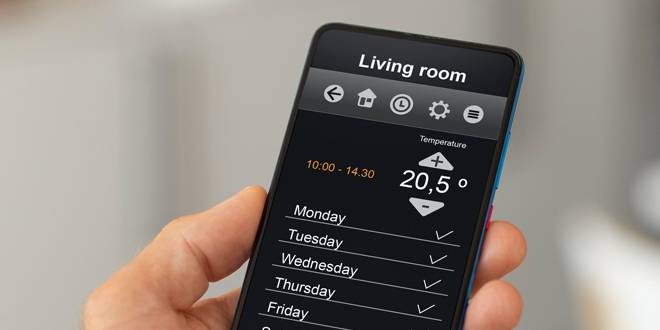Discover the benefits of smart ventilation in Irving, TX. Ideal for both homes and businesses, this advanced technology ensures optimal airflow, enhances indoor comfort, and reduces energy costs, aligning perfectly with the needs of modern living and working spaces.
What is a Smart Ventilation System?

A smart ventilation system is an advanced solution designed to optimize indoor air quality and climate control in both residential and commercial settings. This system intelligently manages the flow of air into and out of a building, using sensors and smart technology to monitor and respond to various environmental factors and occupancy patterns. Here are the key features and benefits:
Sensor-Based Operation
Smart ventilation systems are equipped with sensors that detect parameters like temperature, humidity, carbon dioxide levels, and other air quality indicators. By constantly monitoring these factors, the system can adjust airflow to maintain optimal indoor conditions and favor uneven room temperatures.
Energy Efficiency
These systems are highly energy-efficient. Unlike traditional ventilation, which might run continuously, a smart vent adjusts airflow based on need, thereby reducing energy consumption. This can lead to significant savings on heating and cooling costs, as the system ensures that you are not over-ventilating and wasting energy.
Improved Air Quality
By regulating air exchange based on the quality of indoor air, smart ventilation systems ensure a healthier living and working environment. This is particularly beneficial for individuals with allergies or respiratory issues, as it helps in maintaining a consistent level of air purity.
Customization and Control
Many smart vents can be controlled remotely via smartphones or other devices. This allows users to customize settings according to their preferences and adjust them as needed, even when they’re not physically present.
Integration with Other Smart Home Systems
These systems can often be integrated with other smart home technologies, creating a cohesive and fully automated home environment. For example, it can work in tandem with smart thermostats, optimizing both temperature and air quality simultaneously.
Responsive to External Factors
Smart ventilation systems can adjust based on external conditions like weather. During high pollen days or in extreme humidity, the system can alter its function to maintain comfortable and healthy indoor air.
Occupancy-Based Ventilation
Some systems are sophisticated enough to adjust ventilation based on the occupancy of a room. This means more fresh air in occupied spaces and energy savings when rooms are empty.
In summary, a smart ventilation system represents a significant advancement over traditional ventilation methods. It offers a combination of improved air quality, energy efficiency, and user-friendly customization, making it an ideal choice for modern homes and businesses seeking to enhance their indoor environment in a sustainable and technologically advanced way.
Responsive to Electricity Grid Needs
Adapting to Electricity Demand
Smart ventilation systems are not just about maintaining indoor air quality; they’re also designed to be responsive to the broader energy ecosystem. This feature is especially relevant in areas with advanced electricity grids and demand-response programs.
- Flexibility in Energy Usage: These systems can adjust their operation based on the electricity grid’s current needs, providing flexibility and efficiency.
- Integration with Grid Control: By responding to direct signals from utilities, smart ventilation can play a part in larger grid control strategies, potentially reducing overall energy costs and contributing to grid stability.
This responsiveness not only benefits the individual homeowner or business but also aids in the overall efficiency of the energy grid, making smart ventilation a key player in sustainable energy management.
Weather-Forecast-Based Climate Adjustment
Proactive Climate Control
A standout feature of smart ventilation systems is their ability to adjust indoor climates based on weather forecasts. This predictive capability ensures optimal comfort and energy efficiency, regardless of external weather conditions.
- Anticipating Weather Changes: By analyzing weather reports, the system can prepare in advance for hot, cold, or humid days, adjusting its settings to maintain a comfortable indoor environment.
- Energy Efficiency Through Forecasting: This preemptive adjustment means the system works less intensively than reactive systems, leading to significant energy savings over time.
Incorporating weather-forecast-based adjustments allows smart ventilation systems to provide a consistently comfortable environment tailored to both immediate and upcoming weather conditions.
Real-Time Monitoring and Predictive Analysis
Enhanced Visibility and Control
Smart ventilation systems offer an advanced level of monitoring and analysis, allowing building owners and managers to have a detailed understanding of their energy usage and indoor air quality in real-time.
- Monitoring Energy Usage: These systems provide immediate insights into how much energy is being used for ventilation and climate control, enabling more informed decisions about energy management.
- Predictive Energy Analysis: Beyond just monitoring, smart ventilation can forecast future energy usage. This predictive analysis is invaluable for budgeting and identifying potential areas for further energy savings.
- User-Friendly Interface: Typically, these systems come with user-friendly interfaces, allowing easy access to data and control settings, often remotely through smartphones or other devices.
By offering real-time monitoring and predictive analysis, smart ventilation systems go beyond simple climate control, providing a comprehensive tool for managing and optimizing building energy use and indoor air quality.
Reduced CO2 Emissions
Eco-Friendly Ventilation Solutions
Smart ventilation systems play a crucial role in reducing carbon dioxide emissions, particularly in older buildings. By optimizing energy usage, these systems significantly cut down on the carbon footprint associated with heating, cooling, and air circulation.
- Energy Optimization Reduces Emissions: By intelligently adjusting ventilation based on occupancy and air quality, smart systems ensure minimal energy wastage, leading to lower CO2 emissions.
- Beneficial for Older Buildings: Older structures, often with less efficient HVAC systems, can see a marked improvement in their environmental impact with the adoption of smart ventilation.
Incorporating smart ventilation is not just a step towards more efficient energy use but also a significant move towards more sustainable and environmentally friendly living and working spaces.
Integration with Building Automation Systems
A Cohesive Approach to Building Management
Smart ventilation systems seamlessly integrate with broader building automation systems (BAS), enhancing overall building management. This integration leads to more efficient operation of various building functions, from lighting to security, all centered around energy efficiency and occupant comfort.
- Air Central Heating: Integration with BAS allows for centralized control of various systems, making management more streamlined and efficient.
- Enhanced Efficiency and Comfort: The synergy between smart ventilation and other building systems ensures optimal environmental conditions while also conserving energy.
This integration highlights the role of smart ventilation in modern building management, where various systems work in concert to create a more efficient, comfortable, and sustainable environment.
Maintenance and Repair Notifications
Proactive System Health Monitoring
Smart ventilation systems are equipped with advanced diagnostics that provide timely notifications for maintenance and repair. This proactive approach ensures that the systems operate at peak efficiency and can prevent minor issues from turning into major problems.
- Timely Alerts for Maintenance: Regular updates on system performance and alerts for required maintenance, like filter replacements, help in maintaining the system’s efficiency.
- Early Detection of System Failures: The system’s ability to detect and report issues early on can save significant time and money, preventing extensive damages or downtimes.
The maintenance and repair notifications feature of smart ventilation systems not only contributes to the longevity and efficiency of the system but also offers peace of mind to the owners and managers, ensuring that their ventilation system is always running smoothly.
Take the Next Step with Spencer Air Conditioning & Heating 🌟
Embrace a smarter, more sustainable future today! Contact Spencer Air Conditioning & Heating to upgrade to a smart ventilation system. Enjoy enhanced comfort, energy savings, and a healthier environment. Act now for a greener tomorrow! 🍃🏡 Schedule your consultation today. Let’s innovate together! 🚀📞🌍




